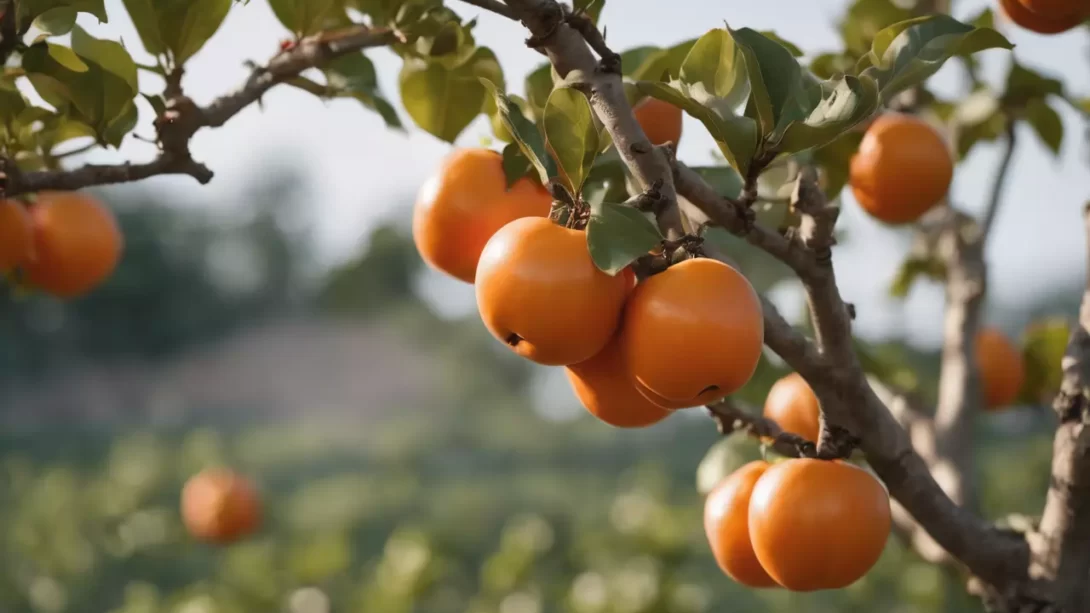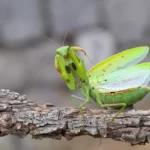Persimmon trees, belonging to the genus Diospyros, are known for their delicious and unique fruits. Originating from different parts of the world, primarily Asia and North America, these trees have been cultivated and valued for centuries. There are two main types of persimmon trees: the Asian persimmon (Diospyros kaki) and the American persimmon (Diospyros virginiana), each with distinctive characteristics.
Types of Persimmon Trees
The Asian persimmon tree, Diospyros kaki, is commonly cultivated for its large, sweet fruit and is a popular choice in orchards and gardens. It generally has a more spreading canopy compared to its American counterpart. The American persimmon, Diospyros virginiana, is native to the eastern United States and produces smaller, but no less flavorful, fruit. It is often found growing in the wild and has a taller, more upright growth habit.
General Appearance of Persimmon Trees
Persimmon trees can vary in size and shape but typically range from 20 to 30 feet in height. Some cultivated varieties, especially those grown in gardens, may be pruned to stay smaller. The trees usually have a rounded, spreading canopy that provides a dense shade. The overall structure of a persimmon tree can be quite striking, with some varieties having a distinctly architectural form. The appearance of the tree can vary significantly between the Asian and American types, reflecting their adaptation to different environments and cultivation practices.
Leaves and Bark
The leaves of persimmon trees are an important aspect of their identification. These leaves are typically large, measuring up to 7 inches long, and have a glossy, dark green color on the top surface, with a paler underside. They are broadly oval or elliptical and have pointed tips. The leaves are arranged alternately on the branches and turn to vivid shades of yellow, orange, and red in the fall, making the tree particularly attractive in autumn landscapes.
The bark of a persimmon tree is another distinctive feature. It is generally gray or black and develops distinctive, blocky patterns as the tree matures. This bark texture can be quite striking and adds winter interest to gardens and natural areas where these trees grow.
Persimmon Flowers
Persimmon trees are also known for their flowers, which are generally small and inconspicuous. They bloom in late spring to early summer. The flowers are usually yellow or greenish-yellow, and there are separate male and female flowers, which can be on separate trees (dioecious) or the same tree (monoecious), depending on the species and variety. The female flowers, if pollinated, develop into the fruit for which the tree is so well-known.
The Fruit: Persimmons
The fruit of the persimmon tree is perhaps its most famous feature. Persimmons are typically round or oval and vary in size depending on the type. Asian persimmons are larger, often the size of an apple, and can be either astringent or non-astringent. They come in shades of yellow, orange, and red. American persimmons are smaller, about the size of a plum, and are usually a deep, orange-red color. The texture of the fruit can range from firm to jelly-like, and they are known for their sweet, rich flavor. The fruit usually ripens in late fall and can remain on the tree into winter, providing a striking visual display and a food source for wildlife.
Seasonal Changes in Appearance
Persimmon trees undergo notable changes with the seasons, adding to their appeal in the landscape. In spring, the emergence of new leaves and flowers signals the end of dormancy. Summer brings a lush, green canopy, under which the fruits begin their development. Autumn is perhaps the most spectacular season for persimmon trees, as the leaves transform into brilliant shades of yellow, orange, and red, creating a stunning display. The fruits also reach maturity in the fall, adding bursts of orange and red to the foliage. In winter, after the leaves have fallen, the bare branches with their distinctive bark and lingering fruits (in some varieties) provide visual interest in the landscape.
Growing Conditions and Habitats
Persimmon trees are adaptable to a range of growing conditions but generally prefer well-drained soil and full sun to partial shade. Asian persimmons often require a milder climate and are more sensitive to extreme cold, while American persimmons are hardier and can tolerate colder temperatures and a variety of soil types, including sandy and clay soils. These trees can be found in a range of habitats, from cultivated orchards and gardens to wild, forested areas and riverbanks in their native regions.
Conclusion
Persimmon trees are not only valued for their delicious fruits but also for their ornamental qualities. With their distinctive leaves, interesting bark, and seasonal color changes, they make a striking addition to any landscape. Whether you are a fruit enthusiast, a wildlife gardener, or simply someone who appreciates the beauty of trees, the persimmon offers a blend of aesthetic and practical benefits. Its adaptability to different environments and climates makes it a versatile choice for a wide range of garden settings.



